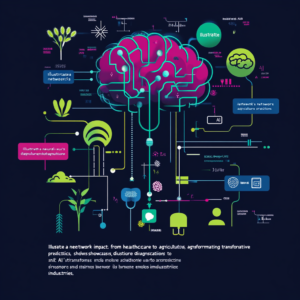
High-performance sodium-ion cathode paves the way for lithium-ion battery alternative
A Toast to Sodium-Ion Batteries: The Unsung Hero of Energy Storage
In the cosmic ballet of technology and sustainability, we find ourselves standing at the precipice of a battery revolution. Enter the sodium-ion battery (SIB), a champion in the making that dares to challenge the lithium-ion battery’s long-standing reign. A little like that unexpected plot twist in your favorite novel, the lowly sodium is now stepping out from the shadows and into the limelight, promising not just a shift in chemistry but an entire overhaul of our energy storage landscape.
Why Sodium? The Case for an Abundant Life
Why should we even give sodium a thought? Allow me to weave you a fairy tale of economics and environmental wisdom, sprinkled with some safety fairy dust. Sodium is about as common as your next-door neighbor—it's everywhere! In every salt shaker, kitchen, and ocean. Contrast this with lithium, which, let’s be honest, is more elusive than a quiet moment on public transportation. The sheer abundance of sodium translates to lower costs, a blessing in an age where budget consciousness reigns supreme. So, while lithium’s supply chain resembles a high-stakes game of Monopoly, sodium brings you solid, reliable lumberjack-like vibes.
And let's talk about the environment. Sodium-ion batteries replace copper with aluminum. Now, if you’ve ever watched a nature documentary, you might understand that copper mining can be a brutal affair for Mother Earth. Sodium, being the chill dude it is, plays nice and avoids ecological chaos. The aqueous incarnations of these batteries even come with a safety insignia—much lower chances of explosive outbursts compared to their lithium-laden cousins. Talk about cutting-edge technology wrapped in good environmental karma!
Performance: Bridging the Gap with Brilliance
Okay, I can hear the skeptics now, “But how do sodium-ion batteries stack up in terms of performance?” It’s like comparing a toddler racing a cheetah—lithium-ion batteries have historically boasted impressive energy and power densities. Yet, enter the dazzling world of three-dimensional covalent organic frameworks (COFs), particularly our star players, 3D-TP-HATN-COF and 3D-TAM-HATN-COF. Let me tell you, these bad boys are changing the game. Imagine interconnected microchannels and redox-active sites bursting with excitement, making ion transport akin to a skateboard on a smooth downhill. The 3D-TP-HATN-COF pulls off jaw-dropping energy density figures—445 W h kg^{-1} and a power density of 21,360 W kg^{-1} at a hefty current density of 10 A g^{-1}. That’s like a tiny battery shouting, “I’ve got a wild ride ahead!”
Delving Into the Marvels of Material Science
Ah, but let us not just linger on the surface. Let’s delve deeper into the materials that are shaping this advent of sodium-ion technology. Picture this: could we create batteries that are both sustainably made and provide performance levels that ink the competition? The innovation of 3D COFs stands as a testament to what’s achievable. When you react organic compounds to craft frameworks studded with redox-active sites, you're not just inventing materials; you're giving birth to a revolution. The 3D-TP-HATN-COF boasts an ion diffusion coefficient that could make even the most seasoned athlete jealous—7.4 × 10^{-9} cm^{2} s^{-1}. It’s like watching a sprinter zoom past everyone else, only in the world of sodium-ion batteries!
And don’t sleep on layered transition metal oxides like NaTMO_{x}2. These materials are serving big capacity, high ionic conductivity, and a synthesis process you could scale up like making pancakes on a Sunday morning—no expertise needed. The P2-type layered oxide is a treasure trove with a reversible capacity of 108 mA h g^{-1} that boasts tenacity, retaining a capacity retention rate of 76.15% after 200 cycles. That’s resilience, my friends—almost like an old tree standing tall through wind and rain.
Electrochemical Magic: From Theory to Reality
Now, how do we know if these new-age cathode materials are worthy of our admiration? Enter cyclical voltammetry (CV) and the galvanostatic intermittent titration technique (GITT)—the unsung heroes of the lab, revealing the strongest contenders in this duel of chemistries. CV illuminates the subtle art of reduction peaks and redox reactions, laying bare the hearts of these electrodes. Meanwhile, GITT confirms that all the fancy numbers aren't just smoke and mirrors; these materials are ready for the fast lane with top-notch ion diffusion.
And cycling stability is where sodium-ion batteries flex their muscles. Take the 3D-TP-HATN-COF, for example—after a staggering 8000 cycles at 10 A g^{-1}, it still boasts an “I got this” attitude with 93% capacity retention. In battery terms, that’s like running a marathon and still being ready for a coffee meetup afterward.
The Dawn of a New Era
There’s a palpable excitement buzzing through the scientific community. The rise of high-performance sodium-ion batteries is not merely an engineering feat; it represents a paradigm shift toward sustainability and efficiency. With abundant materials at our disposal, a chance to lower our ecological footprint, and a performance profile that's ready for the spotlight, sodium-ion technology is crafting the roadmap for the future of energy storage.
This novel chemistry has the potential to truly revolutionize how we think about powering our world, inviting us to move beyond traditional lithium-ion obstacles and embrace a brighter, greener tomorrow. Who wouldn’t want to be part of that journey?
Stay In The Loop!
Want to stay on top of the latest developments in battery technology and automation? Subscribe to our Telegram channel: @channel_neirotoken to keep the momentum going! Your insight into the world of sodium-ion batteries starts here; let's navigate this thrilling landscape together!

